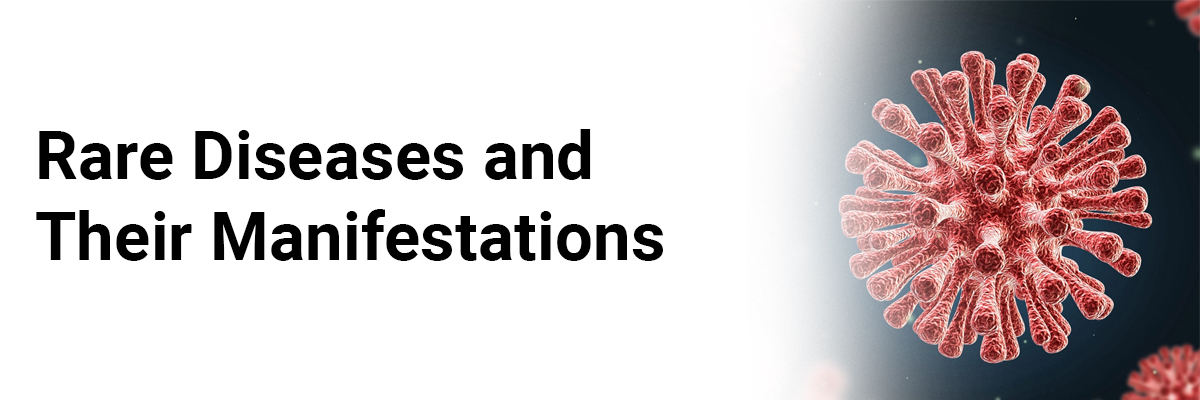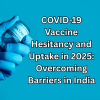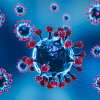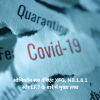
 Mrs. Mayuri Mathur
Mrs. Mayuri Mathur
Rare diseases and their manifestations
Many people may think that rare
diseases occur only in special populations; however, these diseases can afflict
anyone at any age. They can be acute or chronic; some may be debilitating and
present an ongoing risk of death, while others may be inevitably fatal, given
current medical options.
Spreading health awareness
enables individuals to understand their health condition and if it could be
cured. However, unfortunately, many rare diseases are without cures or treatment
currently due to the significant lack of people available to participate in
scientific studies.
What is a rare disease?
Diseases are considered
rare when they affect a small number of people compared to the general
population. A disease can be rare in one region but common in another.
How many rare diseases do we know?
To count there are thousands of
rare diseases. Interestingly, new diseases that might be rare are regularly
described in the medical literature.
How do rare diseases originate?
Nearly all genetic diseases are
rare, but not all rare diseases are genetic. Rare infectious diseases also
exist, like auto-immune diseases and rare cancers. Still, the cause of many
rare diseases remains unknown.
How do rare diseases look like?
Rare diseases represent a subset
of severe, often chronic, and progressive diseases. Many rare diseases may show
signs at birth or in childhood (like proximal spinal muscular atrophy,
neurofibromatosis, osteogenesis imperfecta, chondrodysplasia, or Rett
syndrome); still, over 50% of rare diseases appear during adulthood (like
Huntington's disease, Crohn disease, Charcot-Marie-Tooth disease, amyotrophic
lateral sclerosis, Kaposi's sarcoma or thyroid cancer).
What are the medical consequences of these diseases?
The field of rare diseases needs
more medical and scientific knowledge. Most rare diseases still struggle to get
a cure, but the appropriate treatment and medical care have been shown to
improve the quality of life and extend life expectancy.
Given the rarity of these
diseases and inadequate reporting, individuals affected by these diseases need
help in receiving a diagnosis, relevant information, and proper direction from
qualified professionals.
How do these diseases affect individuals socially?
Individuals affected by rare
diseases tend to be more psychologically, socially, economically, and
culturally vulnerable. However, appropriate policies could overcome these
difficulties. The lack of sufficient scientific and medical knowledge limits
diagnosis, thus causing the disease to remain unidentified and abstaining the
patient from receiving appropriate support.
What are the advancements in the diagnosis and treatment of rare
diseases?
Advancements in science have
enabled us to diagnose hundreds of rare diseases through a biological sample
test. Researchers are increasingly sharing the results of their research in
emerging medical platforms.
Here are some interesting rare
diseases that demand more scientific investigation, funding, and public
understanding-
Ø Stoneman Syndrome
Fibrodysplasia ossificans
progressive (FOP), aka Stoneman Syndrome, is known to gradually turn connective
tissue such as tendons, muscles, and ligaments into bone.
The disorder starts from the neck
and progresses to the shoulders, the lower parts of the body, and finally to
the legs. It restricts the body's movements progressively because the disorder
affects the joints. It can even cause difficulty in opening the mouth, which
can cause trouble while eating and speaking.
This condition currently has no
treatment options due to its rarity.
Ø Alice In Wonderland Syndrome (AIWS)
This disorder represents the most
prominent and often disturbing symptom of altered body image. The affected
individuals find that they are confused as to the size and shape of their body
parts. Involvement of the head and hands are often reported where growth seems
more usual than shrinkage.
It also distorts visual
perception, making the sufferer see the objects with the wrong size or shape
and/or find an incorrect perspective. Other symptoms of this disorder
include Distorted time perception, where a person thinks that time is moving
quickly or slowly; Distorted touch perception; and Distorted sound perception.
There is no treatment for AIWS,
but treatments for possible causes exist.
Ø Hutchinson-Gilford Progeria Syndrome (HGPS)
It represents an extremely rare
genetic disorder in which the symptoms resemble aspects of aging at a very
early age. These individuals typically have a shorter life, ranging from
mid-teens to early twenties.
HGPS's characteristic facial
appearance shows prominent eyes, a thin beaky nose, thin lips, a small chin,
and protruding ears. The individuals may show Alopecia (hair loss),
Aged-looking skin, Joint abnormalities, Loss of fat under the skin (subcutaneous
fat), Kidney failure, loss of eyesight, and Brittle and fragile bones.
Currently, there is no known cure
for HGPS.
Ø Alkaptonuria
Alkaptonuria, aka "black
urine disease," is a very rare inherited disorder that causes an improper
breakdown of two protein building blocks (amino acids) called tyrosine and
phenylalanine. The disorder then leads to a build-up of a chemical called
homogentisic acid in the body, which further turns urine and body parts a dark
color and causes numerous problems over time.
People suffering from this
condition have a normal life expectancy but a lesser quality of life.
Currently, no specific treatment or cure exists, but a certain diet is
recommended to decrease the build-up.
Ø Chronic Focal Encephalitis (Rasmussen's
Encephalitis)
Rasmussen's encephalitis is often
reported in children under ten years of age (more rarely in adolescents and
adults). It represents frequent and severe seizures, loss of motor skills and
speech, paralysis on one side of the body (hemiparesis), inflammation of the
brain (encephalitis), and mental deterioration. It can cause the destruction or
removal of a part of the affected child's brain.
The individuals may also
experience frequent seizures and progressive brain damage in the brain's
affected hemisphere over the first 8 to 12 months and then enter a phase of
permanent but stable neurological deficits.
Available treatments may decrease
brain inflammation at the acute stage but can't prevent ultimate disability.
The bottom line-
Although rare diseases affect very few individuals, they may significantly impact their health and social lives. Early recognition of symptoms and timely management is crucial in preventing disability and improving the quality of life.
Individuals experiencing unusual symptoms should immediately approach their healthcare physicians to receive proper treatment.

Mrs. Mayuri Mathur
Mrs. Mayuri Mathur is a Senior Medical Writer (Patient education and digital) and seasoned content creator with a rich tapestry of expertise spanning over ten years. With a diverse background in content creation, she brings a wealth of experience to the table, from crafting insightful medical articles to developing comprehensive patient education materials, dynamic press releases, and captivating brochures and website content. Throughout her illustrious career, she has demonstrated an exceptional knack for distilling complex medical concepts into easily understandable content, making her a trusted resource for both professionals and lay audiences alike. Her meticulous attention to detail and innate creativity have enabled her to deliver content that not only informs but also engages and inspires. Whether elucidating intricate medical procedures or crafting compelling marketing materials, her versatility and dedication shine through in every project she undertakes. Her passion for writing, coupled with her profound understanding, makes her an invaluable asset to any team or project. In a constantly evolving digital landscape, where effective communication is paramount, Mrs. Mayuri Mathur stands out as a beacon of excellence, consistently delivering top-notch content that resonates with audiences across diverse platforms.

.png)

.png)
.png)




Please login to comment on this article